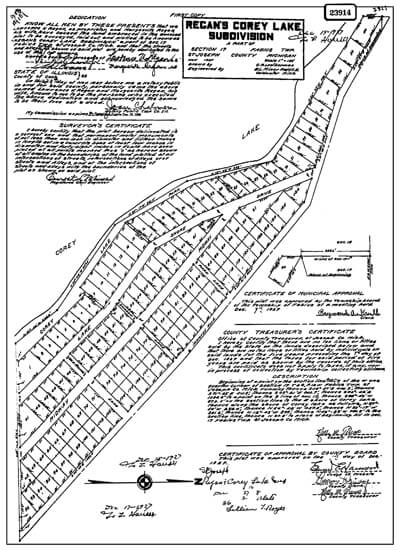
People have always been drawn to the water, so it is no surprise that many lakefront areas in Michigan were developed in the early part of the last century. Many waterfront areas were developed as plats, which are pictorial representations of how a landowner, or plat proprietor, chose to lay out the land. In addition to individual lots, plats often contain roads, alleys, promenades, parks and other “dedicated” areas. Those dedications can be public or private. A common configuration consists of front-tier lots (those on the water) and backlots, with roads or other access devices terminating at or near the water.
It is uncommon to find a plat that has been developed in strict conformity with the plat proprietor’s vision. Over the years lots may have been combined or split and dedicated areas often appear only on paper. Though issues presented by plats are not unique to waterfront property, owning land on the water greatly increases the likelihood that platted areas will become a problem. You should be aware of the following:
1. Even if a dedicated area which appears on a plat map has never been developed or used as intended, it creates rights in those who own land within the plat. For instance though a platted road may have never been developed, it may still be used for its intended purpose of travel. This is most likely to become an issue if the road terminates at the water’s edge, thereby providing access to the lake.
2. If you own land within a plat, or are considering purchasing land within a plat, review a copy of the plat map by clicking here.
3. If you have a front-tier lot, pay particular attention to any dedicated areas that may exist between the front (lakeside) lot line and the water’s edge.
4. People often use platted areas for purposes beyond the scope of the dedication. The most common example is placing a dock at the end of an alley or road that terminates at the water. The longer such uses continue, the more difficult they are to control. Long-term use may even give rise to a prescriptive easement.
These examples are illustrative only, and are not intended to identify the myriad ways that plats can present issues. For guidance regarding any problems you may encounter with your plat, you should consult experienced riparian rights counsel.
